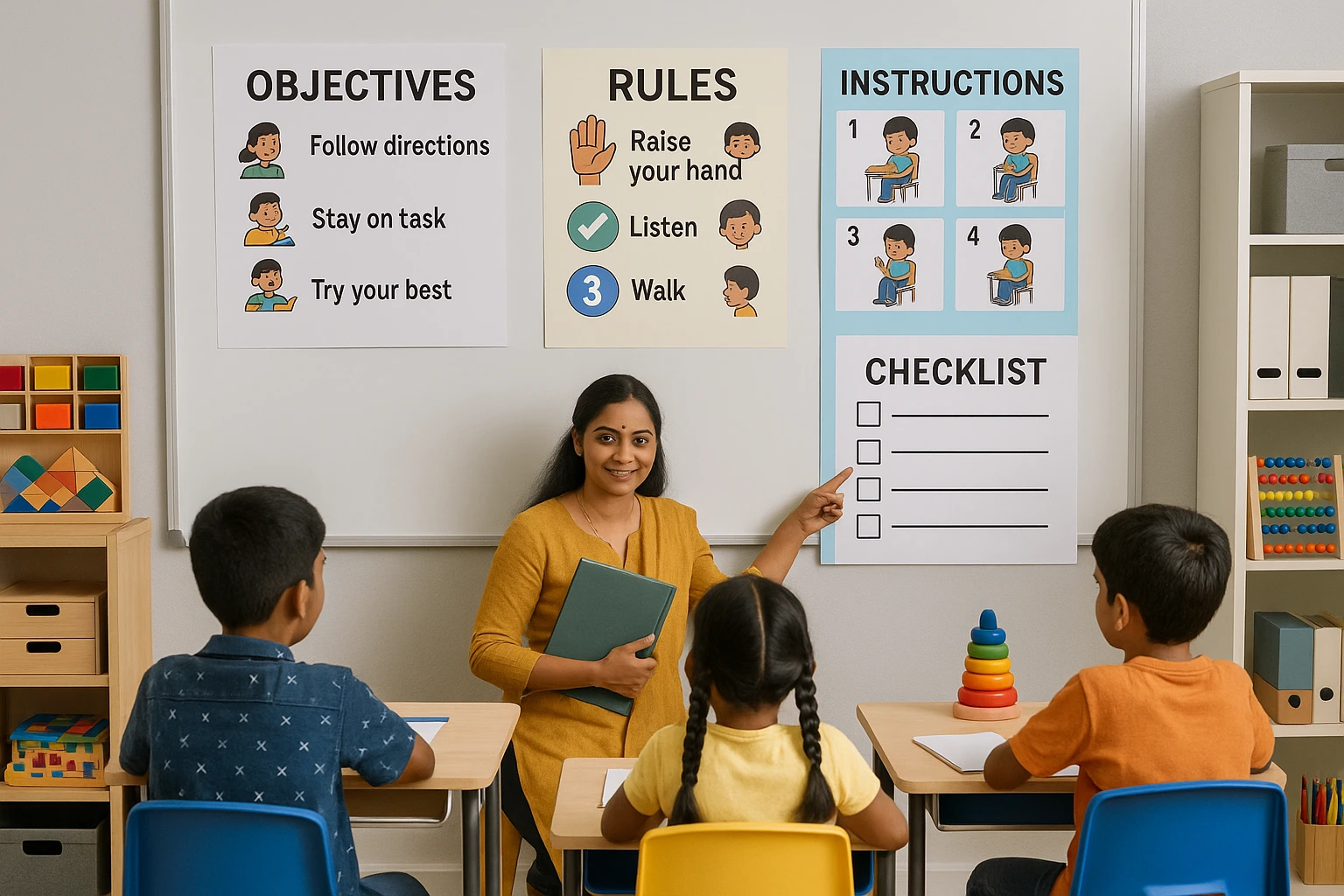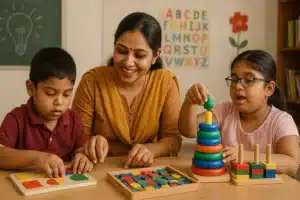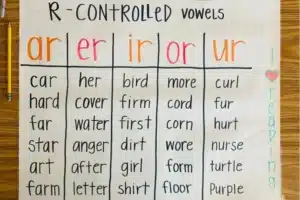
Source: thesun
Definition of Dyspraxia is a motor-related or, in other words, movement-related condition where the movement skills of the person are not suitably developed, leading to inabilities in performing daily tasks. The child fails to function appropriately in their environment as their coordination abilities take a hit, influencing their academic progress as well as daily functioning.
Individuals with Dyspraxia may not have attained crucial developmental milestones, due to which their brain’s capabilities of processing and sending signals to muscles for doing a chore properly are affected, leading to clumsy and confused behaviours. Understanding Definition of Dyspraxia begins with noticing the signs of dyspraxia keenly, which helps parents and educators to seek the desired academic aid and personal guidance to provide them with effective support through systematic strategies and therapy, enabling them to function independently with confidence and comfort.
Signs of Dyspraxia
Signs of Dyspraxia often become noticeable in early childhood, although some may be overlooked until school age. These signs affect both physical and cognitive abilities, often causing challenges in daily routines. Recognizing them early helps in providing the right support.
Common signs of Dyspraxia include:
Poorly developed coordination skills
The child will find it extremely difficult to maintain his balance while riding a bicycle or even walking up the steps, and may bump into other people frequently.
Delayed Milestones of fine motor skills
The child’s finger grip is poor due to which makes simple writing tasks, or buttoning clothes, a huge struggle.
Illegible writing
As the child’s finger grip is not strong, the child’s way of holding a pencil is not correct, due in the letter formation and space management being improper, making the handwriting illegible to read.
Communication Issues
Poorly developed speech and delayed language skills with low vocabulary and unclear speech.
Organising and management struggles
Individuals with dyspraxia suffer from organising their daily chores and managing activities in a sequence.
Tiredness
There is a clear indication that the child cannot sustain any physical activity for a long duration, especially during sports or physical activities.
Low self-confidence
The child hesitates to be a part of any classroom activities due to constant failures, leading to poor confidence in one’s abilities.
The above indicators do not compulsorily appear in the same severity for all individuals; the intensity varies for all. Recognizing these signs at an early stage helps to devise effective strategies and a conducive learning environment, benefiting children in leading independent lives successfully.
Our Informative LD Course brochure is Available Here.
Get details of the LD Course, Call / WhatsApp on +919321024137 / +919869866277.

Source: usnews
What Causes Dyspraxia?
The question: What Causes Dyspraxia? Needs to be addressed precisely, which can be of huge help for parents and educators to help their children address the challenges caused by dyspraxia, especially the coordination skills, which are a must for performing their daily tasks.
Dyspraxia does not have a set defined cause it is a blend of different factors, varying from neurological to genetic conditions affecting this condition.
The prime factors that can cause dyspraxia are listed below:
Brain developmental milestones delayed
Due to poor brain development, the capabilities of the brain to process signals and send the correct responses to muscles are hampered.
Birth before due date
Premature birth, especially those who are born 37 weeks before their due dates, are at a higher risk of this disorder.
Very low weight
When the child is born with very poor weight, which is less than 2.5 kg, there are higher chances of this disorder.
Hereditary reasons
A family with a Dyspraxic person will be at a greater risk of having more such cases in future generations.
Nervous system immaturity
The way the brain processes motor signals may be underdeveloped or slower than typical.
Accident during birth
Any complication during birth, such as low oxygen, immediately affects the pace of brain development during childbirth.
Although the exact reasons vary from child to child, identifying the root causes helps in creating targeted support plans to improve motor skills and daily functioning.
Our Informative LD Course brochure is Available Here.
Get details of the LD Course, Call / WhatsApp on +919321024137 / +919869866277.

How is Dyspraxia Diagnosed?
A blend of methods, such as professional assessments and observation, helps to rule out other conditions and understand the child’s coordination challenges and developmental history.
The procedure for the diagnosis of Dyspraxia is listed below:
Summary of the child’s growth pattern and development
The concerned professional does a thorough scrutiny of the child’s development history, noting down delays in early developmental milestones of babbling, crawling, etc.
Examining Motor skills
A systematic screening of the child’s motor skills is conducted to assess the areas of concern –motor skills (like drawing, scribbling), and gross motor skills (like walking or running on a line).
Speech and language issues
A trained speech therapist conducts a screening to determine if the child has any speech or language issues by performing an informal evaluation of how the child speaks, his clarity and the vocabulary to assess his language development.
Functioning assessment
This helps to understand if the child is facing coordination skills issues needed for simple tasks such as tying shoelaces or even buttoning their shirt.
Teachers’ and Psychologists’ inputs
Inputs are taken from teachers and psychologists who spend considerable time with the child and have a fair idea of their struggles regarding academics and behavioral issues.
Exclusion of other conditions
Medical assessments help to eliminate other conditions, like muscular disorder or partial blindness.
For timely assistance, early identification is important to enhance academic daily life achievements.
Our Informative LD Course brochure is Available Here.
Get details of the LD Course, Call / WhatsApp on +919321024137 / +919869866277.

What to Expect if my Child has Dyspraxia?
Timely Early interventions, assistance and reinforcement work with children having Dyspraxia. Though the intensity and kind of Dyspraxia also need to be considered.
Here’s what parents can expect:
Physical challenges
Difficulty in buttoning, grooming oneself and handling scissors can also be time-consuming and tiring.
Academic struggles
Without assistance, children face difficulty in arranging schoolwork, copying and writing.
Speech and communication delays
Hurdles faced by children with pronunciation, speech clarity, or word formation.
Social difficulties
Finds it troublesome to participate in games and groups, which leads to feelings of seclusion and blocking.
Emotional self-regulation
Finds it challenging to express feelings and nonverbal gestures, which in turn leads to nervousness, panic, and low self-confidence.
Advancement with therapy
Therapies like speech, physical and occupational help to increase independence and skills.
Need for perseverance and endeavor
daily routine, regular practice, and reinforcement make a big difference.
Children with dyspraxia bloom under a well-guided, planned and customized programmed would lead to academic and personal growth.
Our Informative LD Course brochure is Available Here.
Get details of the LD Course, Call / WhatsApp on +919321024137 / +919869866277.

Source: theparentz
Management and Treatment
As there is no specific treatment, but early intervention through consistent educational support, therapy and reinforcement from home helps to improve daily functioning and build important skills in children. To understand these strategies better, the Learning Disability Course offered by Vidhyanidhi Education Society (Govt. Regd.) prepares teachers and parents with practical tools to support kids with dyspraxia.
Effective approaches include:
Occupational Therapy
Enhances fine motor coordination, for example, like legible handwriting, grooming, or effectively using common day-to-day tools.
Physical Therapy
Supports balancing, muscle coordination and movement.
Speech and Language Therapy
In speech development, that is clarity, pronunciation and language development.
Classroom changes
Use of assistive techniques like pencil grippers, notepads, and laptops can reduce academic challenges.
Structured routines
Likely schedules help reduce anxiety and improve task completion.
Parental participation
Practicing therapy methods at home lifts progress and builds confidence.
This Learning Disability Course covers identification, teaching approaches and therapy support methods. Whether you are a teacher or caregiver, joining the Learning Disability Course by Vidhyanidhi Education Society (Govt. Regd.) can help make an actual difference in a child’s education journey.
Boost your skills with Vidhyanidhi Education Society’s LD Course today!
Our Informative LD Course brochure is Available Here.
Get details of the LD Course, Call / WhatsApp on +919321024137 / +919869866277.
FAQs
When should my Child consult a Healthcare Provider regarding Dyspraxia?
Assessment for Dyspraxia can be done by the Healthcare provider if the child is struggling in day-to-day life or has issues with skills required for coordination or movement.
What if you have Dyspraxia?
Day-to-day functions like movement, coordination and planning abilities are impacted due to Dyspraixa. It can be managed with early intervention and help.
How common is Dyspraxia?
5-6% of kids have Dyspraxia. Vidhyanidhi Education Society helps manage it effectively through intervention therapy.



